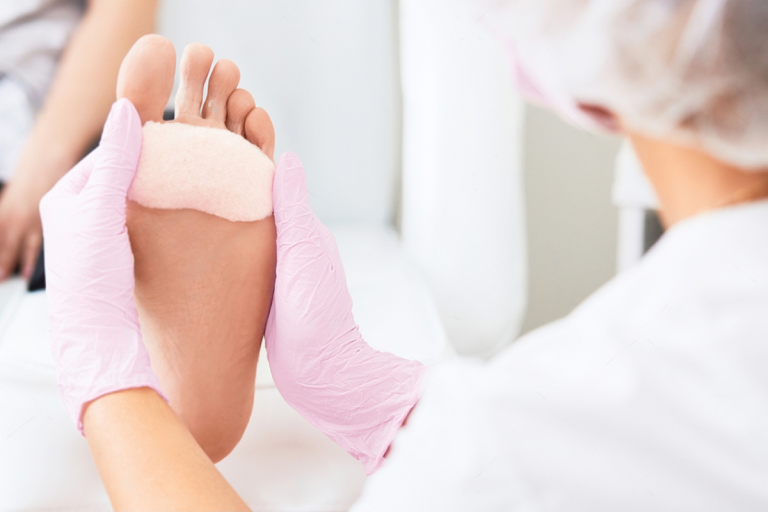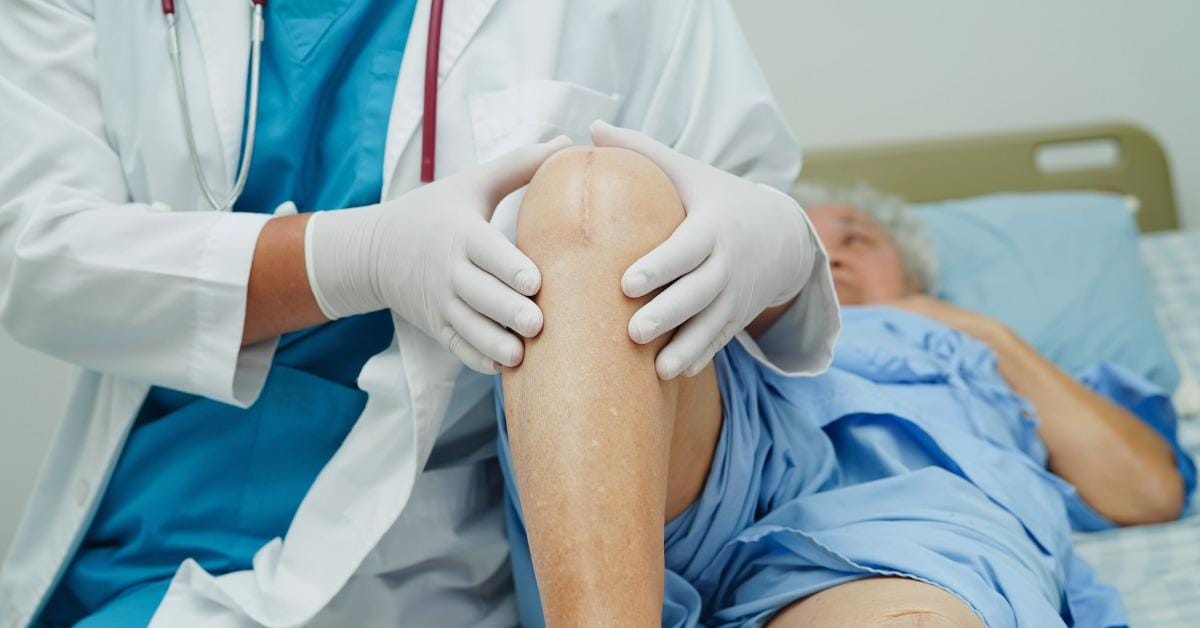Toe ulcers are not just a minor inconvenience—they are a potentially serious medical condition that, if left untreated, can lead to infection, hospitalization, and even amputation. Particularly for individuals living with diabetes, toe ulcers are a common and dangerous complication. These open sores can deteriorate rapidly without proper care, especially when circulation is compromised or nerve damage masks the warning signs.
Orthopedic treatment for toe ulcers offers a specialized, multidimensional approach that goes beyond wound cleaning. With a focus on healing, preventing infection, and preserving long-term mobility, orthopedic care addresses both the symptoms and root causes of toe ulcers to protect a patient’s overall well-being.
What Are Toe Ulcers?
Toe ulcers are open lesions or sores typically found on the tip, side, or base of a toe. They are often the result of impaired blood flow, repetitive pressure, nerve damage, or infection. Individuals with diabetes are especially susceptible due to peripheral neuropathy (which reduces sensation in the foot) and compromised circulation.
These ulcers may appear small on the surface but can extend deeply into the skin, affecting underlying tissue and bone. Left untreated, toe ulcers can quickly progress to serious infections such as cellulitis or osteomyelitis, which may require amputation to prevent further systemic issues.
Understanding how and why these ulcers form is the first step toward recognizing the importance of orthopedic treatment for toe ulcers.
Why Orthopedic Care Is Essential for Toe Ulcers
General wound care may not be sufficient for complex foot wounds, especially when underlying orthopedic or biomechanical factors are involved. Orthopedic treatment for toe ulcers addresses the structural, circulatory, and systemic issues that contribute to the ulcer’s formation and impaired healing.
Orthopedic specialists are trained to assess bone health, joint alignment, foot pressure points, and gait abnormalities—all of which can affect the development and healing of ulcers. By identifying and treating these contributing factors, orthopedists can create a customized treatment plan that improves healing outcomes while preventing future wounds.
Unlike standard topical care, orthopedic treatment for toe ulcers is proactive, targeting both symptom relief and functional restoration.
Core Components of Orthopedic Treatment for Toe Ulcers
Accurate Diagnosis and Risk Assessment: Effective treatment begins with a thorough diagnostic process. Orthopedic specialists conduct a clinical examination to determine the ulcer’s severity, depth, and cause. Imaging tools such as X-rays, MRIs, or vascular studies may be used to identify underlying bone infection or poor blood flow.
Understanding whether the ulcer is ischemic (related to poor circulation), neuropathic (related to nerve damage), or infected helps tailor the orthopedic treatment plan. Timely diagnosis significantly improves healing and minimizes long-term complications.
Infection Management: Many toe ulcers are already infected by the time they are diagnosed. Orthopedic treatment for toe ulcers prioritizes infection control using both surgical and non-surgical methods. These may include:
- Wound debridement: Removing dead or infected tissue to allow new tissue growth
- Oral or IV antibiotics: Prescribed based on culture results
- Drainage or minor surgical interventions: Especially if an abscess or bone infection is detected
Orthopedists may work in collaboration with infectious disease specialists to manage aggressive or chronic infections.
Wound Healing Strategies: Orthopedic care doesn’t end with cleaning the wound. The healing process is supported by various advanced methods:
- Offloading pressure: Custom orthotics, diabetic shoes, and total contact casts redistribute weight away from the ulcer
- Specialized dressings: Moisture-control dressings, antimicrobial barriers, and bioengineered tissue may be used
- Nutritional support: Protein and micronutrient intake is assessed to ensure the body can support wound healing
Through a multidisciplinary strategy, orthopedic treatment for toe ulcers enhances natural healing and significantly lowers the risk of re-ulceration.
Surgical Intervention (When Necessary): For severe or non-healing ulcers, surgery may be required. Orthopedic surgeons can perform procedures such as:
- Toe or partial foot amputation (to control widespread infection)
- Tendon lengthening or osteotomies (to correct deformities that cause excessive pressure)
- Vascular surgery referral if blood flow needs to be restored through bypass or angioplasty
Surgical decisions are made with a focus on limb preservation and functional mobility.
Benefits of Early Orthopedic Intervention
Delaying treatment for toe ulcers can have devastating consequences. Early orthopedic treatment offers several critical advantages:
- Preservation of the toe or foot
- Faster healing time through targeted therapies
- Lower risk of recurrent ulcers
- Protection of mobility, allowing patients to return to daily activities
- Reduced healthcare costs by preventing hospital admissions or major surgeries
Patients who receive orthopedic treatment for toe ulcers at the first sign of trouble are more likely to maintain their independence and avoid life-altering complications.
Managing Underlying Conditions
Toe ulcers are often just one part of a larger health picture. Orthopedic specialists understand that successful treatment also involves managing the underlying conditions that caused the wound. This includes:
- Blood sugar control in diabetic patients
- Addressing peripheral arterial disease (PAD)
- Monitoring neuropathy progression
- Lifestyle changes such as smoking cessation, weight management, and regular foot checks
Collaboration between orthopedic physicians, endocrinologists, podiatrists, and wound care nurses ensures comprehensive care and lasting results.
Preventing Toe Ulcers Through Orthopedic Insight
Once a toe ulcer heals, preventing recurrence becomes the priority. Orthopedic care includes education and preventative strategies such as:
- Custom footwear fitting to offload pressure points
- Routine gait and pressure evaluations
- Protective padding or inserts
- Regular follow-ups with an orthopedic specialist
- Daily foot inspections by the patient or caregiver
By focusing on long-term foot health, orthopedic treatment for toe ulcers extends well beyond the initial wound closure.
Patient Success Story: Restoring Hope and Mobility
Consider the story of a 58-year-old diabetic patient who developed a toe ulcer after a minor injury went unnoticed due to neuropathy. After weeks of home remedies and minimal improvement, he sought orthopedic care.
The orthopedic team at Tec Orthopedics diagnosed a deep ulcer with underlying bone involvement. A combination of surgical debridement, custom orthotics, offloading, and advanced dressings was initiated. With close monitoring and diabetes management support, the patient’s ulcer fully healed in eight weeks. Today, he walks without assistance and wears customized footwear to prevent recurrence.
This story illustrates how orthopedic treatment for toe ulcers can restore quality of life when standard care falls short.
Why Choose an Orthopedic Specialist for Toe Ulcers?
Orthopedic specialists bring a unique, biomechanics-centered approach to wound healing. They understand the structural stresses that affect the feet and toes and know how to adjust or surgically correct them. When combined with infection control and wound care, orthopedic treatment for toe ulcers becomes a complete and powerful solution.
Clinics like Tec Orthopedics offer advanced diagnostics, multidisciplinary expertise, and personalized treatment strategies tailored to each patient’s condition and lifestyle needs.
Takeaway
Toe ulcers are serious wounds that demand timely and expert care. With the rise in diabetes and circulatory disorders, these ulcers are becoming more common—and more dangerous. Orthopedic treatment for toe ulcers offers a targeted, structural, and medically comprehensive approach that promotes healing, prevents recurrence, and protects mobility.
By choosing an orthopedic specialist, patients gain access to advanced diagnostics, custom footwear solutions, and surgical expertise if needed. Early intervention can mean the difference between healing and long-term disability.
Don’t wait for a wound to worsen. If you or a loved one is struggling with a non-healing toe ulcer, consult an orthopedic provider and take the first step toward healing and hope.






